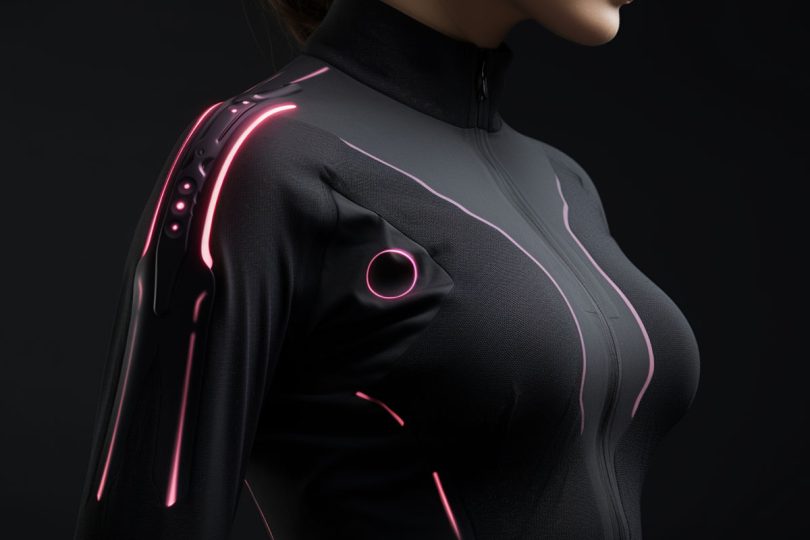Technology is now woven into what people wear, not just carried in their hands. The rise of smart fabrics marks a new step in how the body and technology connect. These materials are not limited to sports or healthcare. They are part of a wider shift toward data-driven living — from medical rehabilitation to personal fitness and even leisure platforms like a teen patti online game that link interaction and responsiveness in real time. The same principle applies to wearable recovery: clothing that can measure, interpret, and respond to the body’s signals.
The Evolution of Wearable Monitoring
Early wearable devices were simple. They counted steps, tracked heart rates, or estimated calories burned. Their sensors sat on the wrist or chest, separate from the skin’s natural movement. Smart fabrics take the next step by embedding sensors directly into fibers. This allows continuous measurement of body temperature, muscle tension, and blood flow without interrupting motion.
Unlike older devices, these textiles act as part of the body’s surface. When connected to digital systems, they can detect signs of fatigue or slow recovery long before a person feels pain or exhaustion. For athletes, that data can prevent overtraining. For patients recovering from injury or surgery, it can guide rehabilitation safely.
The goal is not only measurement but response. Some fabrics adjust compression or temperature based on the body’s condition. Others send alerts when movement patterns suggest strain. This kind of feedback loop changes the way recovery is managed.
How Smart Fabric Works
Smart fabrics blend traditional textiles with conductive materials and micro-sensors. Each thread can carry small electrical signals, reading physical or chemical changes from the body. Algorithms process the information, translating it into usable data such as muscle activation, hydration levels, or joint stress.
The information is usually transmitted wirelessly to a phone or computer. From there, users or medical staff can analyze patterns. For example, a gradual rise in local temperature around a healing muscle might indicate inflammation. A drop in movement range can suggest fatigue or stiffness.
Because the sensors are flexible, the fabric stretches and bends like normal clothing. That makes it easier to wear for long periods, which improves data consistency. Unlike machines in hospitals or clinics, these textiles collect information during daily life — while walking, working, or sleeping.
Applications in Sports and Medicine
The first users of recovery-oriented wearables were professional athletes. For them, the difference between training and injury can be small. Continuous monitoring helps manage that boundary. When a fabric detects early signs of fatigue, training intensity can be adjusted before damage occurs.
In clinical settings, the same principle supports rehabilitation. Patients recovering from muscle injuries, fractures, or surgeries can wear smart garments that track their progress. Therapists use the data to tailor exercises or detect setbacks early. This reduces guesswork and helps prevent complications caused by overuse.
Elderly care is another emerging field. Fabrics that sense posture, heart rhythm, or body temperature can alert caregivers to sudden changes. That means monitoring without invasive devices or constant supervision.
The Business of Data
As with most connected technologies, the question of data ownership follows quickly. Smart fabrics collect detailed biological information. Who controls it — the user, the company, or the medical provider — remains unclear in many markets.
There are also challenges in processing the vast amount of information these devices produce. Turning raw sensor readings into meaningful advice requires not only software but careful interpretation. Without proper guidance, users may misread data and make poor decisions about rest or training.
Commercially, companies are exploring how to make these garments affordable and durable. Replacing sensors or batteries is still expensive, and washing can damage delicate wiring. Long-term adoption depends on whether smart textiles can survive daily use while remaining cost-effective.
Ethics and Accessibility
The spread of wearable recovery systems raises ethical and social questions. If these tools become central to modern health management, what happens to those who cannot afford them? There is also a risk of over-monitoring, where people feel pressured to track every movement and biological signal.
In workplaces, such data could be used to measure productivity or endurance, blurring the line between wellness and surveillance. Balancing the benefits of insight with privacy rights will be essential as adoption grows.
The Science of Recovery
At the core of wearable recovery lies the science of how the body heals. Fatigue, whether muscular or systemic, shows up through micro-signals: temperature shifts, delayed motion, or altered breathing. Smart fabrics give researchers a way to capture those signals continuously, outside of laboratories.
Over time, this can build new models for understanding fatigue and recovery. Instead of relying on averages, scientists can study personalized responses. This individual approach could reshape how doctors prescribe rest, nutrition, and therapy.
The Future of Integration
The next stage of development may combine smart fabrics with self-adjusting systems. Imagine clothing that tightens around a recovering joint to reduce swelling, or fabric that warms cold muscles automatically. These possibilities depend on materials that can sense and act, not just record.
Integration with artificial intelligence could also help predict injuries before they occur. By comparing data across users, systems might identify hidden risk patterns or suggest preventive measures.
Conclusion
Smart fabrics are redefining what recovery looks like. Instead of separating rest from activity, they make healing an ongoing, measurable process. The same shirt or sleeve that tracks fatigue can guide the body back toward balance.
As with all new technologies, progress brings questions — about privacy, cost, and control. But the direction is clear: recovery is becoming a data-driven experience woven into daily life. The line between clothing and care continues to thin, thread by thread.






